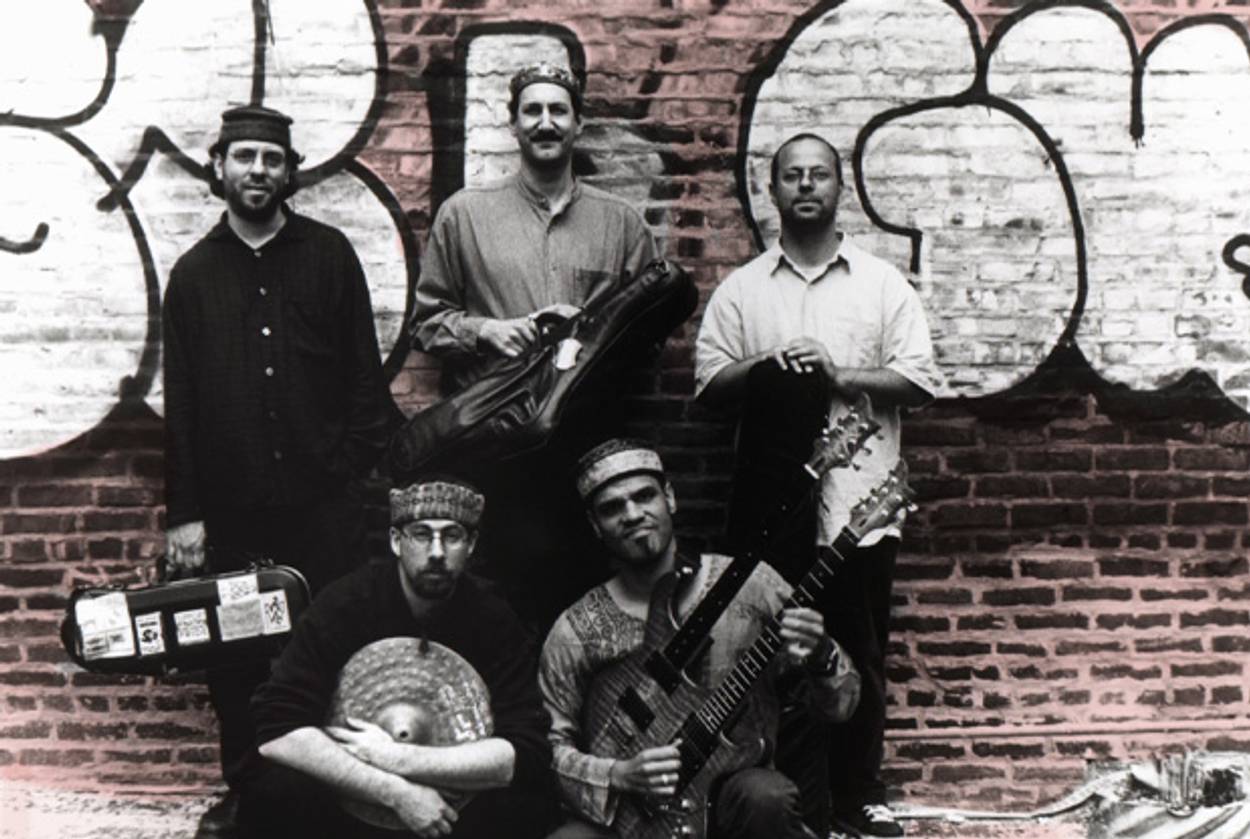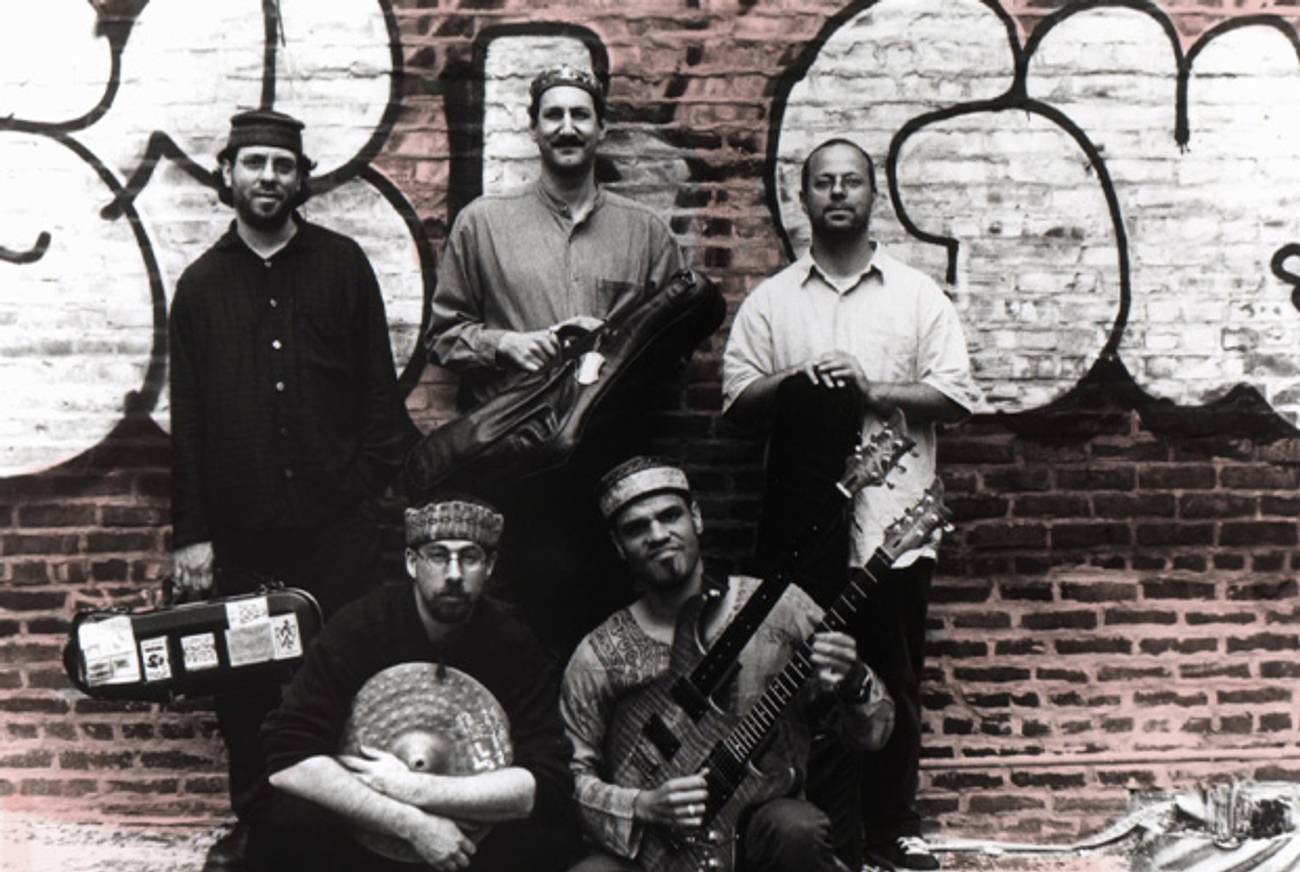Reviving the Downtown Sound
John Zorn’s Tzadik record label compiles the radical work of the 1980s New York jazz group Hasidic New Wave




When we speak about the transmission of Yiddishkeit, one of the most fascinating cultural phenomena of the late 20th century was New York’s downtown music scene. A number of tremendously talented young Jewish musicians aligned their musical identities with traditional Jewish music, re-interpreting it a new, radical way. Hasidic New Wave, one of the experimental groups to emerge from the downtown music ferment, will go down in history for their treatment of traditional Hasidic chants—niggunim—which the band’s leaders Frank London and Greg Wall, fellow graduates of the New England Conservatory, learned when playing Hasidic weddings to support themselves. The band’s entire output, as well as a CD of new, previously unreleased material, has now been collected and is being republished by John Zorn’s Tzadik Records as a box set. On Dec. 12, the release will get a celebration from friends and special guests at New York’s Le Poisson Rouge. I had the honor of writing liner notes for the HNW boxset. When I asked Wall if he had any thoughts about the writing, he said: “Write it in a way that’s most exciting for you.” When I asked London he said: “Make it a poem.”
***
1. At a tish, before getting the song rolling, you tell a story. Here’s one about how the first Hasidic tune—a niggun—came to be. A rebbe, before he was known as such, was abducted by a group of hoodlums. Whether they expected a ransom or did this simply out of spite wasn’t clear. He sat tied up, on the side, as they gathered, and drank, and burst into song—because that’s what everyone did, forlorn hoodlums too; everyone always sang. A Ukrainian song with Ukrainian words, which a rebbe, who wasn’t then a rebbe, could not understand. But he joined in, more bleating goat than songbird, blurring the lyrics, washing over them in a language that was not Slavic, and neither was it Hebrew or Yiddish. If you ever read a laundered page of poetry you’ll have a sense of what he sounded like. A desperate bid, inspired by fear rather than revelation? Either way, what followed neither he, nor the robbers could have predicted; he became the root to their tree, root-radical note underneath their melody. What prompted the turn-around, what the newly appointed rebbe and his newly appointed Hasids suddenly stumbled upon, was the sense that everything in the world has a metaphysical twin—likely a triplet. What they stumbled upon was the fact that the true the counterpoint of tradition and its interpretation is neither in collaboration nor the escape—but a single conflicted, entranced, festive, and entirely unexpected, world.
Listen to “Vesamachta Dub”:
[audio:https://www.tabletmag.com/wp-content/files_mf/09-Ve-Samakhto-Dub.mp3]
2. What’s Hasidic about Hasidic New Wave? Not just the high-caliber treatment of the traditionals or niggun-heads hovering atop fluid improvisational bodies: That’s too easy. The real parallel is in the constant, incessant address of the transcendent. Miles Davis once said about his early bebop days: “We were like scientists of sound. If a door squeaked we could call out the exact pitch.” Members of HNW are not just scientists—they’re the sound’s alchemists; they heard the squeaks and squeals and groans of the Hasidic soul and extracted the ingredients that make this music point unmistakably heavenward.
3. Martin Buber once wrote: “The Hasidim could not model the tales they told … on a literary form either extant or in the making. … The inner tempo of the Hasidim is frequently too impassioned, too violent for a form which could not contain the abundance of what they had to say.” The inner tempo! And while this was true for Hasidic stories, niggunim were very controlled: composed and sung word-for-word, note-for-note like the law itself. The moment’s abundance—improvisation—generally wasn’t part of the music. The mark of HNW is in the fusion of both the niggun’s depth and the big storytelling people-moan coming from the horn. It’s everywhere, but check out the solos and trappings of “Satmer Hakafos #6,” the opening instrumental lines on “Men Trink Mashke,” and especially “Welcome to the McDonald’s in Dachau.”
4. Playing the traditional melody lines, HNW are there hora’ing with centuries of Hasidim, circling, singing-screaming, arms linked. But when it comes to solos, the musicians are innovators—the few who can not only sing the tunes but can pick them apart, blow into their ethereal components, rethink them, ride them, become other people, erupt, and then return to the circle.
5. Band leaders Frank London and Greg Wall, who originally met at the New England Conservatory, know this music from the inside. Their New York beginnings involved playing music nightly at Hasidic weddings. Greg told me about a formative moment that happened at one of these weddings when, after playing for over an hour, soaked and spent, the band stopped but the Hasidim didn’t even notice: They kept rolling because the music already took them where they wanted to be. Hasidic music in that way is practical—like drinking, yelling, praying, bonding—a straight shot of ecstasy.
6. Juxtaposition of London and Wall’s horns to David “Fuze” Fiuczynski’s guitar tips the scales into impressionism. If horns are the people screaming to/at each other—over the breathing-stomping of the rhythm section—Fuze is the sound of people huddling, hugging, stepping on each other’s feet.
7. Above all else, this music makes you want to dance. Even alone at home with your headphones. And when you do, you really begin to feel the energies that inhabit this music, all of its spirits of different languages and eras, shapes and memories that may have nothing to do with being Hasidic. Particularly here I’m thinking about the tune called “Bo-Peep,” an original track composed by the band’s drummer, Aaron Alexander.
Listen to “Sacred Line”:
[audio:https://www.tabletmag.com/wp-content/files_mf/09-The-Sacred-Line.mp3]
8. The focus on transcendence is epitomized in “Sacred Line,” a heart-squeezing goose-bumps-engendering ballad with notions of sacredness that seem to have more in common with Coltrane than the Baal Shem Tov (think of Trane’s “Dear Lord”). It’s a tight, slow, gripping masterpiece of Greg Wall’s from a score originally commissioned by choreographer Carolyn Dorfman, which featured HNW. When you listen to this track in the context of the larger HNW endeavor what comes to mind are the traditional “badeken” songs-chants that accompany the veiling of the bride ritual. They contain that same ballad-like gentleness, but also a sense of induction, anticipation (see HNW’s feel on “Bobover Wedding March,” for example). And, in the Kabbalistic vein where the “bride” stands in for the great feminine symbol, folk-soul under the cosmic chuppah.
9. Another monumental composition is a track called “H.W.N.” Split into two parts, it opens with vocals so profoundly melancholy, beautiful, and convincingly niggun-like that one would be hard-pressed to guess the song was penned in this century—which it was, by Frank London. The only instruments accompanying the vocals are the drums. The juxtaposition of voices and the drums makes the voices sound all the more disembodied. Yet somehow, once uttered, these voices feel permanently implanted—like layers and layers of paint poured on the walls of the invisible shtiebl.
Listen to “H.W.N., Pt. 2”:
[audio:https://www.tabletmag.com/wp-content/files_mf/05-H.N.W.-Part-Two.mp3]
10. Among the most conceptually piquant remakes is “Vesamachta Dub,” propelled by Fima Ephor’s strikingly vocal and semantically loaded bass playing. It’s variously deep in a way a deep groove is, but it also sounds like an intonation of someone teaching, sermonizing. In the original, it’s a two-part folk song of festivity, celebration. Here it is arranged into a multiplicity of parts, with the song’s darker underpinnings discerned and accentuated. Dub-echo is the reverberation of the Hasidic celebration, its constant splitting into multiple emotional layers, a celebration tinged with mourning, a wedding and a funeral.
11. Since these albums came out 10 to 15 years ago, many bands have experimented with the Middle-Eastern and Klezmer-infused music on dance-floors undreamt of by our ancestors; it is also clear that this music is as relevant and groundbreaking today as it was back then. These five albums (four original Knitting Factory releases plus a CD of goodies and rarities) assembled together form a world of their own, become a new kind of story. Not only the story of one band’s trajectory or even a memorable slice of musical history, but rather a single winding strand of a Hasidic tale in the tradition of Rabbi Nachman of Breslov. The way Sun Ra put it: “History is his story; my story is mystery!”
***
Like this article? Sign up for our Daily Digest to get Tablet Magazine’s new content in your inbox each morning.
Jake Marmer is Tablet’s poetry critic. He is the author of The Neighbor Out of Sound (2018) and Jazz Talmud (2012). His jazz-klezmer-poetry record Hermeneutic Stomp was released by the Blue Thread Music in 2013.
Jake Marmer is Tablet’s poetry critic. He is the author of Cosmic Diaspora (2020), The Neighbor Out of Sound (2018) and Jazz Talmud (2012). He has also released two jazz-klezmer-poetry records: Purple Tentacles of Thought and Desire (2020, with Cosmic Diaspora Trio), and Hermeneutic Stomp (2013).